
One of the most fascinating types of mammals in this world are residents of the ocean and its surrounding areas. They have whiskers and small snouts, with faces that resemble dogs and elongated streamlined bodies. We’re talking, as you guessed, about seals! Seals belong to the clade of carnivores referred to as Pinnipeds. Pinnipeds are a widely diverse sub-family of mammals that includes 34 different species of seals and sea lions, and the walrus. Despite their canine appearance, these animals are believed to be closer relatives of bears and musteloids (the family to which raccoon and skunks belong).
These creatures are both predator and prey. While all species in this clade share similar features, each is also unique, be it geographically or aesthetically. From the ringed seal to the leopard seal, these oddly adorable aquatic hunters are scattered in waters all over the world and are sure to fascinate you. Here are 14 seals you might not have been familiar with.

(By Shawn Dahle, Wikimedia Commons)
This species is also called the jar seal, and netsik or nattiq by the Inuit. They are a species of earless ice seal found all across the Northern Hemisphere. They reside in various parts of the Arctic ocean, the Pacific north coast of Japan, North Atlantic coasts of Scandinavia, Greenland, and Newfoundland, and finally in freshwater sources in Northern Europe. Ringed seals eat a variety of fish and aquatic invertebrates. They are often hunted by polar bears and killer whales.

(By Uryah, Wikimedia Commons (top) and By Per Harald Olsen, Wikimedia Commons (bottom))
This species also goes by the name Lake Baikal seal and nerpa by the Inuit. They are a relative of the ringed seal and are found only in Lake Baikal in Siberia, Russia. They are the only pinniped species that reside exclusively in freshwater, and how this species made its way to Lake Baikal is still a mystery. It is also one of the smallest species of true seals. They feed almost solely on golomyanka, also known as the Baikal oilfish.

(By Mehr News Agency, Wikimedia Commons)
This seal is named after the Caspian Sea, where it is found scattered across the rocky islands and floating blocks of ice within it. They are a descendant of the Ringed Seal and became endemic to the landlocked Caspian Sea after the melting of continental ice sheets. They eat certain species of fish and crustaceans. This seal usually lives in solitude, except for their mating season, which is in the summer and the winter.

(By Tomomori, Wikimedia Commons)
This seal also goes by the name Larga or Largha seal. It is found in the continental shelf of the seas surrounding the Arctic Ocean, the waters and ice floes of the northern Pacific Ocean, up to the northern areas of the Yellow Sea and the western Sea of Japan. Reduction in Arctic ice floes caused by global warming has led to this species being considered endangered. This seal is also hunted for its skin and genitals, which are used in traditional Chinese medicine.
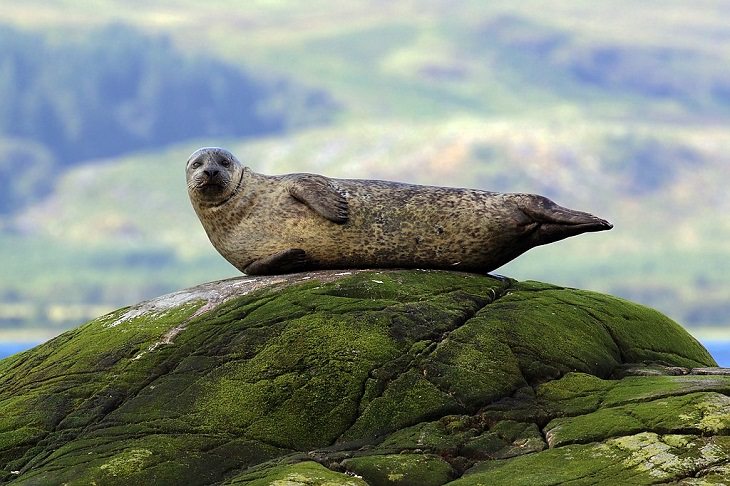
(By Charles J Sharp, Wikimedia Commons)
This species is also known as the common seal and is the most widely distributed Pinniped species in the world. They can be found in the Arctic and Pacific Oceans, as well as in the Baltic and the North Sea. Large amounts of blubber under the skin allow them to maintain a steady body temperature both in cold and temperate climates. Harbor seals form large colonies on shorelines during mating seasons though this collection can be disturbed by human presence.
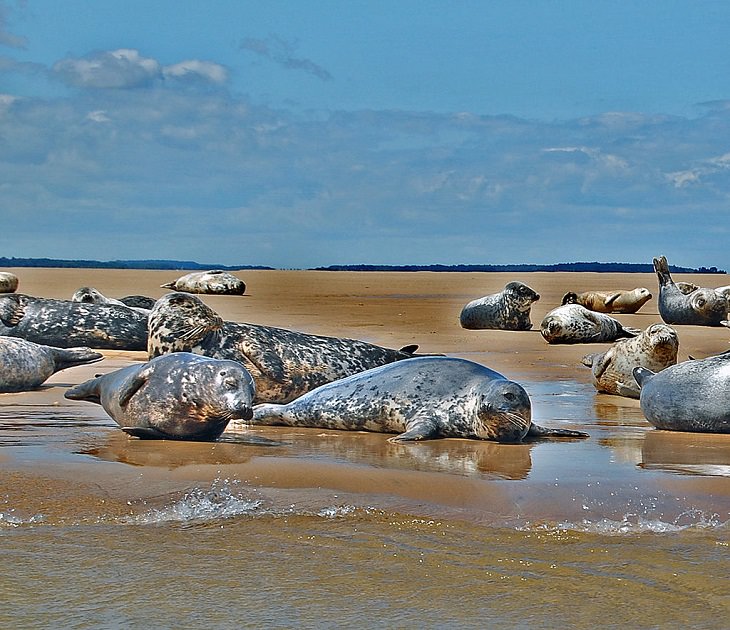
(By Duncan Harris, Wikimedia Commons)
Grey seals are the only seals in the Genus Halichoerus and also go by the names horsehead seal and Atlantic seal. The latter name was given to the animal, as it can be found throughout the North Atlantic Ocean. They grow to about 7 feet in size and are recognized by their large snouts. They can be found in colonies in the coastal waters of the US, Canada, the UK, and Ireland.
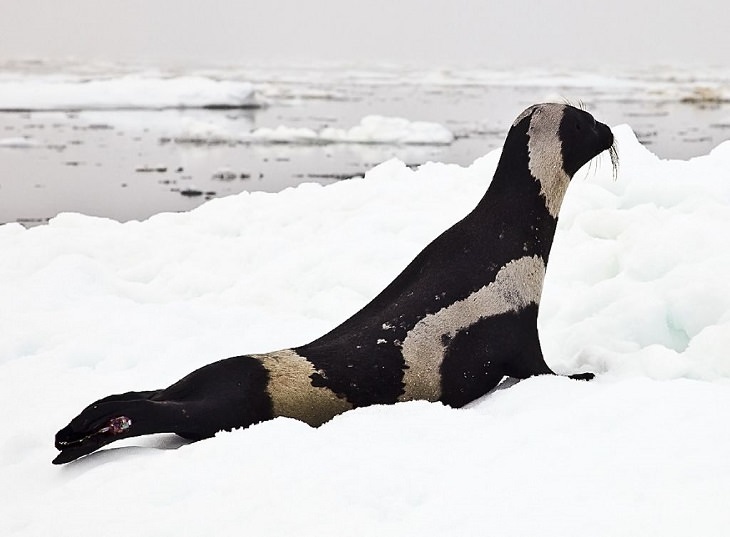
(By Bering Land Bridge National Preserve, Wikimedia Commons)
This species usually mates and breeds during winter and spring, and tends to move in colonies towards areas rich in pack ice in the North Pacific Ocean’s Arctic and Subarctic regions. The most notable of these areas include the ice floes found within the Sea of Okhotsk, off the Russian coast and the Bering Sea, which lies between Eurasia and the Americas. They are the only living species left in the genus Histriophoca.
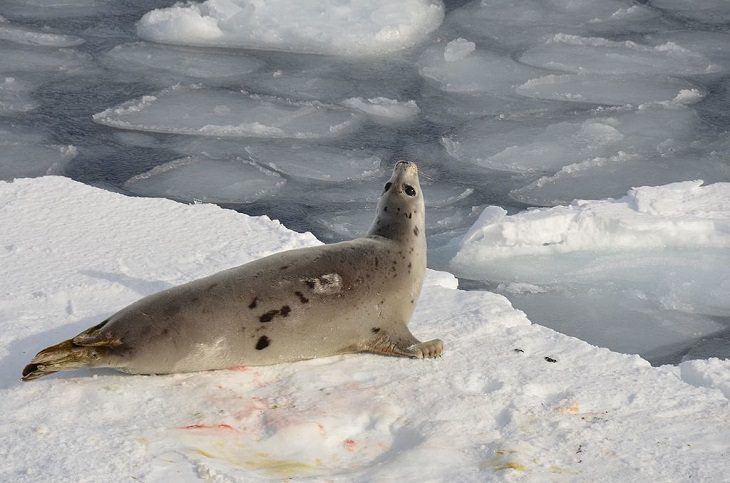
(By Lysogeny, Wikimedia Commons)
This species also goes by the names the Greenland seal and the Saddleback seal. Its scientific name, when translated, reads as “ice-lover from Greenland”, which is an apt description of the creature. They are predominantly found in the northernmost regions of the Arctic and Atlantic oceans. This seal has its own system of thermo-regulation, which includes modified behavior, the storage of blubber, and flippers, which act as heat exchangers.
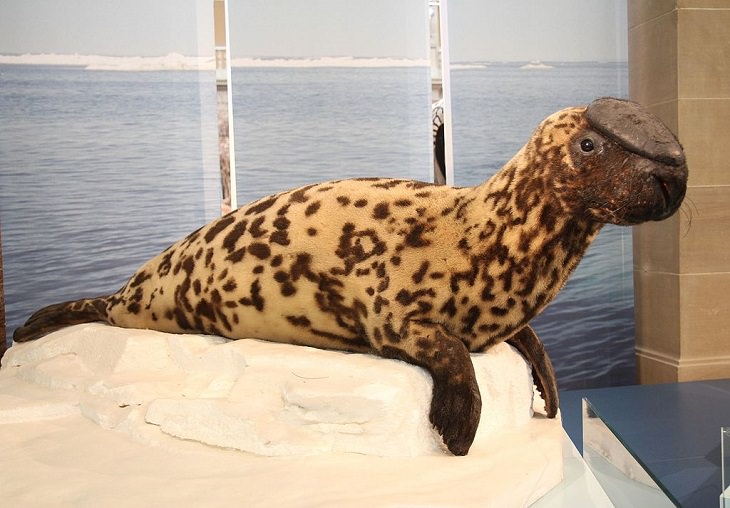
(By Ziko van Dijk, Wikimedia Commons)
This species is also referred to as blue-backs, as their backs take on a blueish coat during infancy, which is shed when the pups molt. They are found solely in the western and central regions of the North Atlantic. The males carry a peculiar inflatable bladder septum on their heads, which is why their scientific name translates to “bladder bearer” in Greek. They are usually gray or white with large black spots covering their bodies.
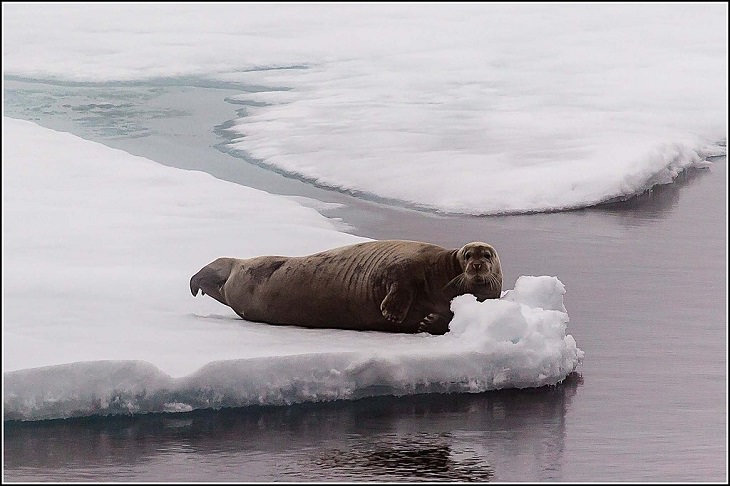
(By Smudge 9000, Wikimedia Commons)
Both the common name and the scientific name of this species refer to its extraordinarily heavy jawline and unique whiskers. The whiskers of this seal, when dry, tend to curl up, resembling the appearance of a beard. It also goes by the name square-flipper seal. They are the largest species of northern true seal. They are found in numerous Arctic and Subarctic regions, including in the Chuchki Sea, Bristol Bay, the Bering Sea and the Sea of Okhotsk across the Pacific, as well as the northern Arctic coasts of Norway, Russia, Alaska, and Canada.
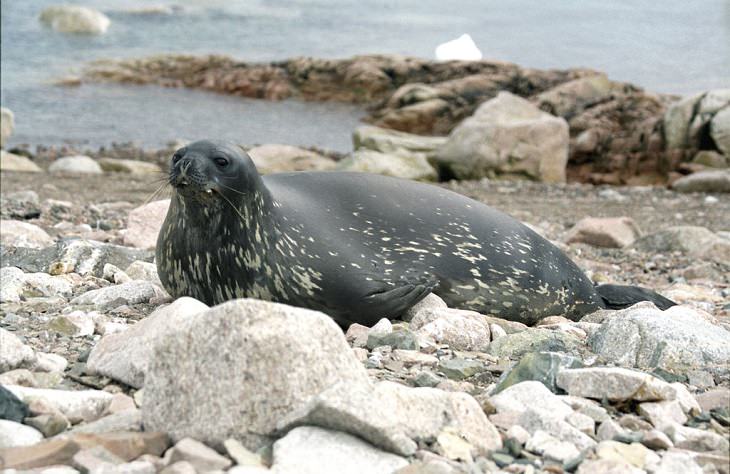
(By Jerzystrzelecki, Wikimedia Commons)
This species of earless seal was named after British sealing captain James Weddell, who first discovered the seal in a certain area of the Antarctic Ocean, which is now referred to as the Weddell Sea. They are extremely large, growing up to 11 feet in length, and, despite only occupying Antarctic regions, the animal grows a very thin coat of fur. They usually reside on Fast Ice, which is blocks of ice that are fastened to coastlines. They are foragers of the ocean, feeding mainly on silverfish and Antarctic cod.

(By Murray Foubister, Wikimedia Commons)
Also known as the sea leopard, this species is the second largest seal in the Antarctic region. While they feed on a wide range of prey, which includes other smaller pinnipeds and seals, they have a natural predator - the Killer Whale. They usually reside in the colder regions of the Antarctic, as they are an “ice-loving species”, but often move towards sub-antarctic regions and southern coastlines of Australia, New Zealand, South Africa, and South America during mating and breeding seasons.
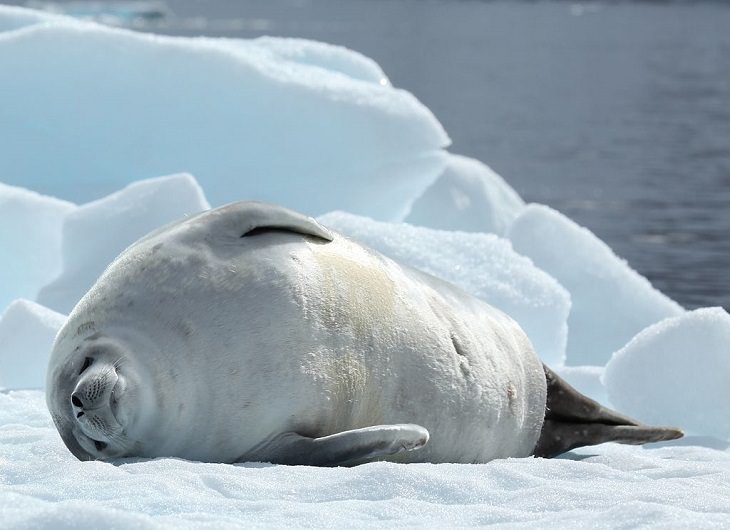
(By Liam Quinn, Wikimedia Commons)
A species identified primarily by its dietary habits, this seal is also referred to as the krill-eater seal. It is a true seal and is widely distributed across the coastline of Antarctica. This species is actually the most abundant species of seal on the planet, which has been attributed to its diet of Antarctic Krill, which is also available in the Southern Ocean in massive droves. Unlike most other seals, the crabeater spends its entire life, mating seasons included, on the pack ice surrounding the Antarctic coast.
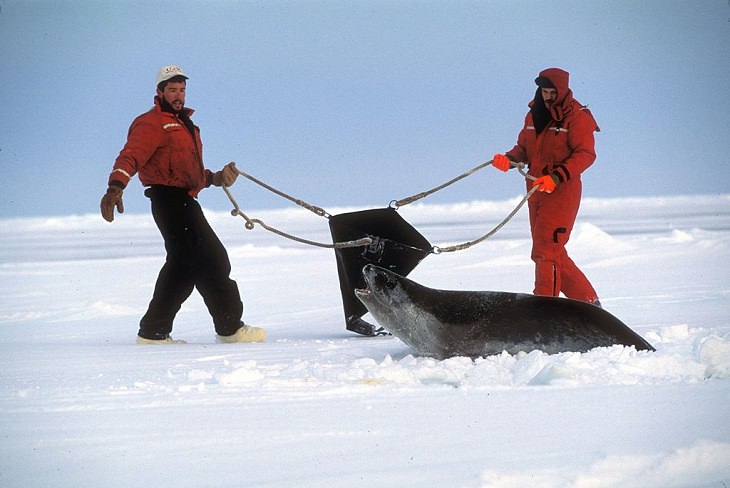
(By Dr. Michael Cameron, Wikimedia Commons)
This species was discovered during the Ross Expedition to the Antarctic in 1841, which is how it got its name. It is the only living species in the genus Ommatophoca and is the smallest, least well-known and least abundant of all Antarctic Seals. Its scientific name is derived from one of its unique features, namely its disproportionately large eyes. These seals are also known for their method of communication, which involves a shrill siren-like vocalization.